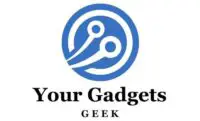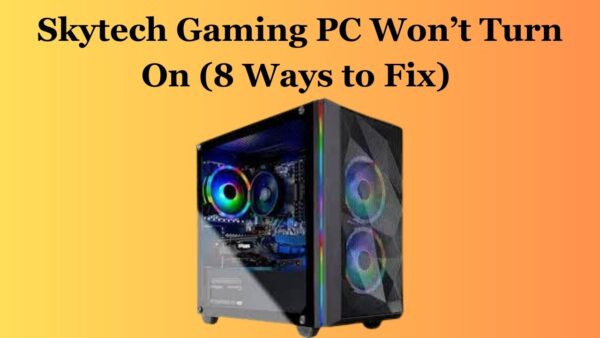I was working on my computer when suddenly it stopped posting. I hit the power button but nothing happened, no lights, no sound, nothing.
So, I researched online to figure out the problem and how I can fix it. After a few hours I found a possible way to solve this issue.
In this article, I’ll show you why your PC won’t Post but fan spins, and how you can fix it.
Let’s begin!
How to Fix Computer Won’t Post But Fan Spin
You should try the following methods to solve your computer that isn’t turning on.
Check Power Source
Your computer might run into this situation due to the faulty or incompatible power source. While you are having this issue with your device you should inspect your power socket.
It is because, if the socket isn’t providing enough power it can cause your PC not to turn. You can test your power socket with a multimeter or a lamp.
So, you can plug a lamp into the power socket and check whether it lights up. If the lamp doesn’t work you may have a faulty power socket.
Once you’ve suspected the power socket you should repair it by getting in touch with an expert.
You can also use another power source from your house/office and ensure your computer works perfectly.
Check PSU
When you are facing the computer boot issue but its fan is spinning you may have a problem with your PSU.
The PSU unit is responsible for receiving and delivering the power to each component of the computer.
So, if the power supply unit is faulty or not providing proper voltages to the hardware; it will prevent the device from turning on.
In order to check the PSU you should use a voltmeter/multimeter and connect the pins on the PSU.
However, if you are not able to inspect the Power Supply yourself you should get in touch with an expert or bring it to the repair shop.
When you are testing the power supply ensure that each cable has standard voltage, if one of the cables has too high, or low current you might face an issue.
Power Cycle PC
One of the other ways you can solve this issue is to power cycle your PC; because you may have this problem due if the PC isn’t completely turned on.
So, in this situation you should consider power cycling your computer to remove the software bugs or caches.
Here is how you can do this:
- Press and hold the Power and Shift keys together to completely turn off the PC.
- Then you can disconnect the power cord from the power socket.
- Now, hold down the power button again for about 30 seconds.
- After this duration you should plug the PC back into the power and ensure it works.
Check RAM Sticks
Sometimes malfunctioning RAM sticks can be the reason for your computer to not start but fan spin. RAM is a kind of temporary memory on your computer that stores basic information to boot your PC.
If you have a faulty RAM memory your computer will not be able to boot but the cpu fan will be spinning.
You should remove the memory sticks from the motherboard and clean all the sticks with compressed air or rubbing alcohol.
After cleaning them, insert back to the computer and turn on to ensure it works. If you are still unable you should test the RAM sticks.
Disconnect all the sticks and insert back individually into the slot until you find the problem. Once you find the faulty RAM you should replace or repair it.
If you are still unable to figure out the problem you can swap the RAM sticks with another PC if you have one.
Check Cables Connection
One of the other ways to check your computer not turning on error is to inspect all the connected cables.
You may run into this situation when you have one of the faulty or loose cable connections. You should inspect the cable connection to ensure there is no faulty connection.
If you find a defective cord on your PC you should replace it with a new one to solve the problem.
On the other hand you can also check your cable connection, and fix it by reconnecting them to your PC.
Your computer cable replacement cost will be around $10 for each cable, and will be easily available from online stores.
Incompatible Monitor
In a few cases it is also encountered that a faulty or incompatible monitor screen causes the PC no display issue.
If you are unable to turn on your computer/ or display on screen, the problem can be caused by compatibility reasons.
So, you should check your computer and monitor requirements and ensure it is compatible with the PC.
Inspect USB Devices
If you are still experiencing this issue you should check all the connected USB devices to your computer.
In order to solve the problem, you should remove all the connected devices; printer, USB flash drive, keyboard, mouse, or graphics card.
And then connect each hardware component individually to the motherboard until you find the problem.
Once you’ve found the defective USB device you should test it with another PC, if it is not working you will need to replace it.
On the other hand you should take a look at the new connected devices. If you’ve recently added a hardware component you should disconnect it.
Once you’ve disconnected the recently added hardware from the computer, turn your PC on and ensure it POST.
Clear CMOS
Another way you can resolve your computer that isn’t POST is to clear the CMOS battery and factory reset the BIOS to default settings.
Here is how you can do this:
- Turn off all the connected accessories and disconnect them.
- Next, turn off your PC and disconnect from power.
- Take off the PC cover to access the CMOS battery.
- Remove the battery and wait about 30 seconds.
- After time passes, insert it back and put the PC cover back on.
Inspect the Motherboard
You should also inspect your motherboard, because it can be malfunctioning or its capacitors might be faulty.
Sometimes your motherboard might have bad capacitors that lead to the POST issue. So, you can use a voltmeter to check motherboard voltages and for any short circuit.
If you’ve suspected your motherboard is defective you should bring it to the nearest repair shop or to the manufacturers.
Test the Power Button
A faulty power button also causes your device not to POST but the fan spin issue. So, you should start testing your power button by disconnecting it from power and taking off the PC cover.
Next, you should locate the pins on the motherboard that connect the button to the motherboard.
These pins are usually labelled (Power SW) or other similar words. Then you should short these pins using a screwdriver or a paperclip.
If your PC turns on when the pins are shorted/power button jumped, it means you have faulty power button causing issue with your device.
In order to solve the problem you will need to repair the motherboard or the power button itself.
Check GPU
In the end if you are still unable to solve this problem on your PC, you should check your graphics card.
Sometimes a faulty or incorrectly installed graphics card prevents your PC from turning on, but the fan keeps spinning.
You should take off the PC cover and inspect the GPU carefully to ensure it is correctly installed on your device.
If the cable connection is secure, you should swap it with another computer to ensure your GPU isn’t malfunctioning.
If you have suspected that your graphics card is faulty you should consider replacing it with a new one.
A new GPU will cost you about $150-400 according to its make, model, performance, and other features.
Contact Customer Support
If you’ve tried all the methods and are still unable to solve this issue, you should consider contacting the manufacturer’s team.
The manufacturers team will help you in this situation and take a deep look into the situation and run it back normally.
Final Words
These are methods that will helps you to solve your computer that won’t turn on but its fan spins:
- Check Power Source
- Check PSU
- Power Cycle PC
- Check RAM Sticks
- Check Cables Connection
- Incompatible Monitor
- Inspect USB Devices
- Clear CMOS
- Check GPU
Where Does Computer Store its Data Permanently
Can CMOS Battery Cause Computer Not to Start
Why Computer Runs Slow After Adding More RAM
Computer Running Slow, But Task Manager Shows Nothing
References:



